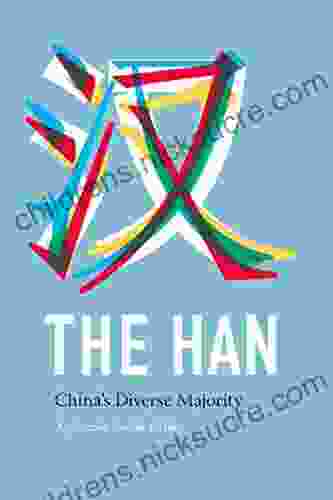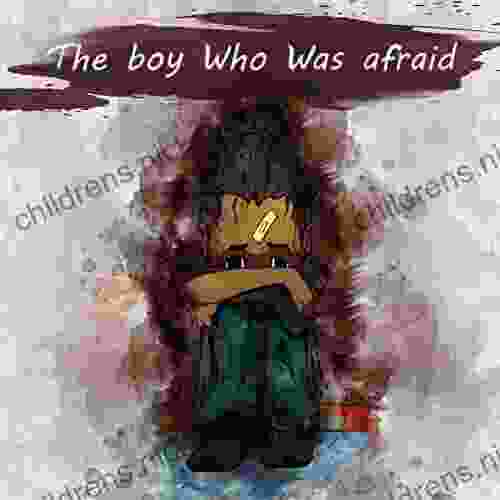China's Diverse Majority: A Comprehensive Study of Ethnic Groups in China

China, a vast and ancient civilization, is a melting pot of cultures, languages, and traditions. The country is home to a diverse population of 56 ethnic groups, each with its own unique heritage and identity. The Han majority, constituting over 92% of the population, has long played a dominant role in shaping the history and culture of China. However, the country's minority groups—variously known as "minzu" or "minority nationalities"—have also made significant contributions to the nation's rich tapestry.
This article aims to provide a comprehensive overview of China's diverse majority, exploring the unique cultures, traditions, and histories of its minority groups. We will examine their contributions to Chinese society, the challenges they face, and the efforts made to preserve their cultural heritage.
5 out of 5
| Language | : | English |
| File size | : | 4286 KB |
| Text-to-Speech | : | Enabled |
| Screen Reader | : | Supported |
| Enhanced typesetting | : | Enabled |
| Print length | : | 203 pages |
The Han Majority: A Dominant Force
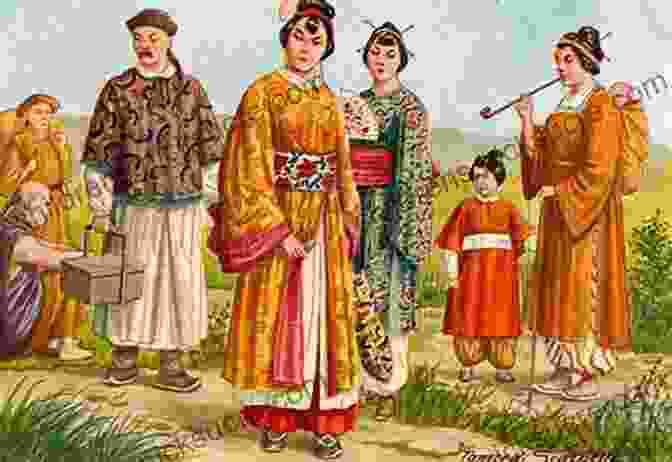
The Han people, with an estimated population of 1.4 billion, are the dominant ethnic group in China. They are primarily concentrated in the eastern and central regions of the country, including the densely populated provinces of Guangdong, Jiangsu, and Shandong. The Han majority has played a pivotal role in shaping the history, culture, and political landscape of China.
The Han culture is characterized by its emphasis on Confucian values, such as filial piety, respect for authority, and social harmony. The Han language, Mandarin Chinese, is the official language of the People's Republic of China and is spoken by the vast majority of the population. Other significant aspects of Han culture include traditional Chinese opera, calligraphy, martial arts, and cuisine.
Minority Groups: A Rich Tapestry of Diversity
Despite the dominance of the Han majority, China is home to a vast array of minority groups, each with its own distinct cultural identity.
Tibetans
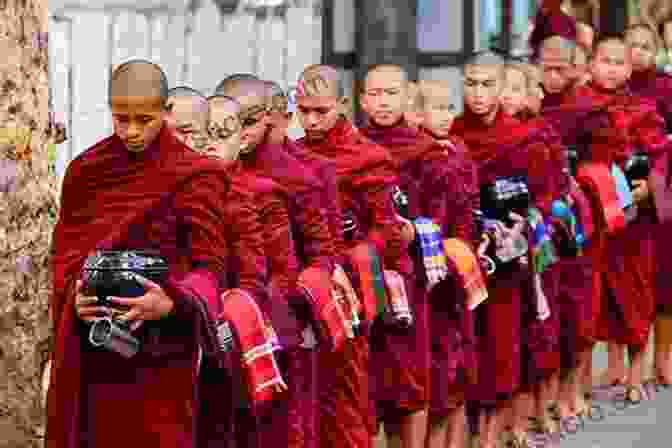
Tibetans, numbering around 6.3 million, are primarily concentrated in the Tibetan Autonomous Region, with significant populations also found in the provinces of Qinghai, Sichuan, and Yunnan. Tibetan culture is deeply rooted in Buddhism, and the Dalai Lama is considered the spiritual leader of the Tibetan people. Tibetans are known for their distinctive religious practices, art, and traditional medicine.
Uyghurs
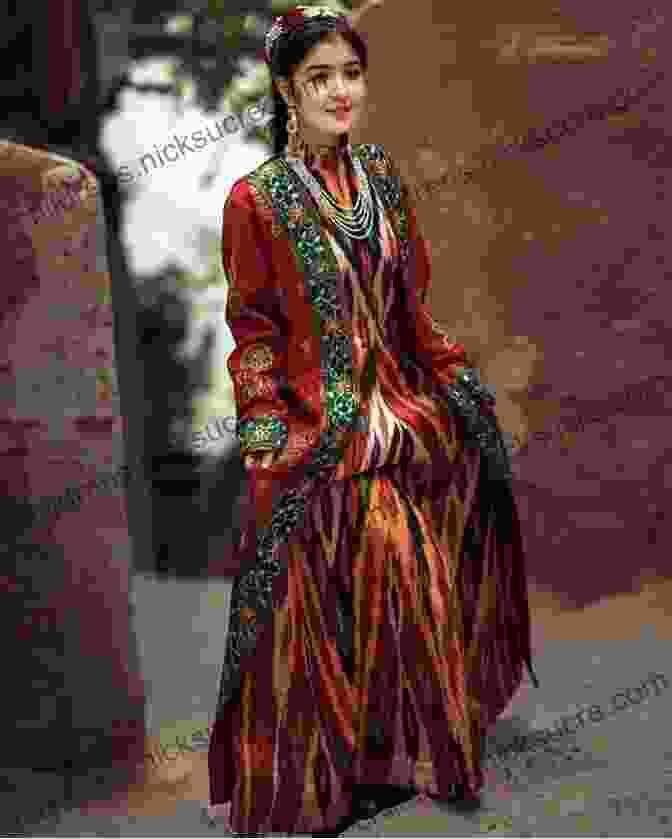
Uyghurs, with a population estimated at around 11.6 million, are primarily found in the Xinjiang Uyghur Autonomous Region, in the northwest of China. They practice Islam and speak a Turkic language. Uyghur culture is influenced by both Chinese and Central Asian traditions, and is renowned for its music, dance, and cuisine.
Mongols
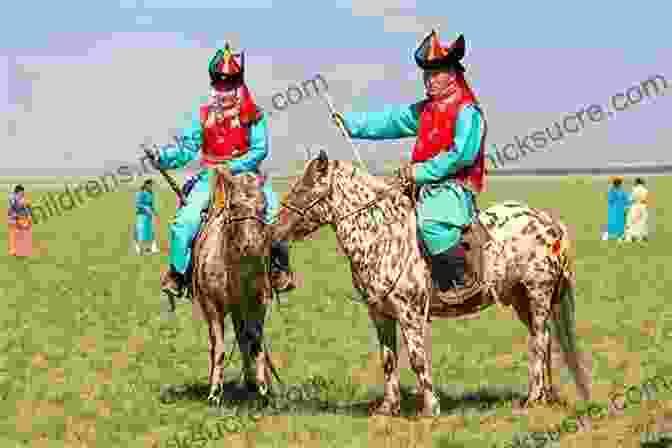
Mongols, numbering around 5.9 million, are primarily concentrated in the Inner Mongolia Autonomous Region, but also have significant populations in other northern provinces. They are descendants of the Mongol Empire, founded by Genghis Khan in the 13th century. Mongolian culture is characterized by its nomadic traditions, equestrianism, and archery.
Zhuang
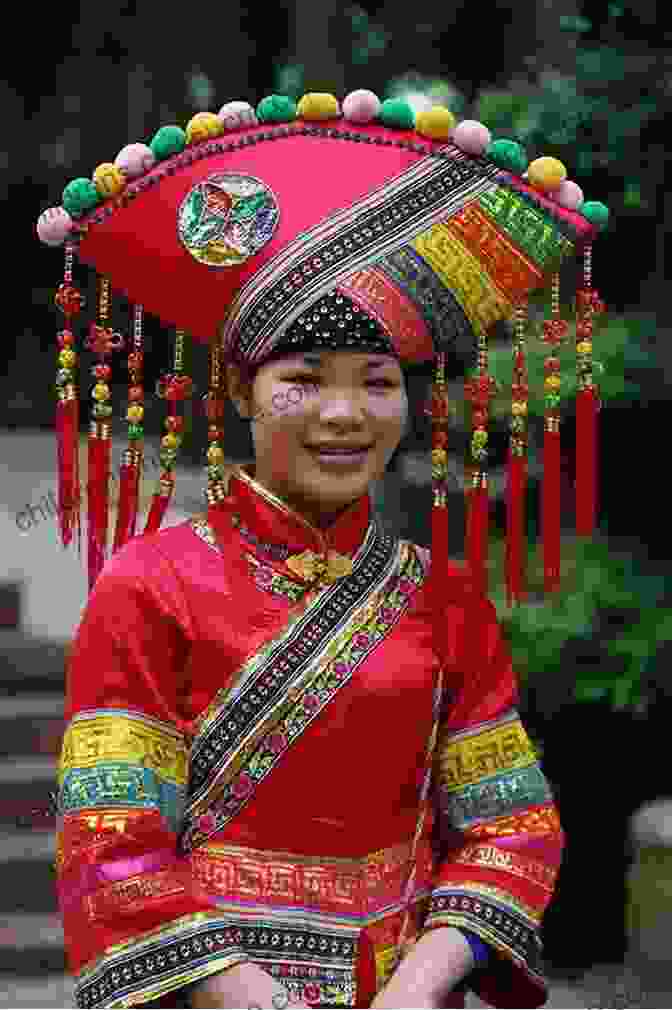
Zhuang people, with a population of around 16.9 million, are the largest minority group in southern China. They are primarily concentrated in the Guangxi Zhuang Autonomous Region, with significant populations also found in neighboring provinces. Zhuang culture is influenced by both Han and Southeast Asian traditions, and is known for its colorful textiles, folk songs, and traditional architecture.
Other Minority Groups
In addition to the major ethnic groups mentioned above, China is home to a wide range of other minority groups, each with its own unique cultural identity.
- Manchus: A people of Tungusic origin, who ruled China during the Qing dynasty (1644-1912).
- Hui: A Muslim ethnic group, with strong cultural ties to Arabic and Persian cultures.
- Yao: A group of hill tribes, primarily concentrated in the mountainous regions of southern China.
- Yi: A group of Tibetan-Burman peoples, found in the southwest of China, with a rich tradition of storytelling and herbal medicine.
- Miao: An ethnic group concentrated in the southwest of China, known for their colorful embroidery and unique cultural practices.
Contributions of Minority Groups to Chinese Culture
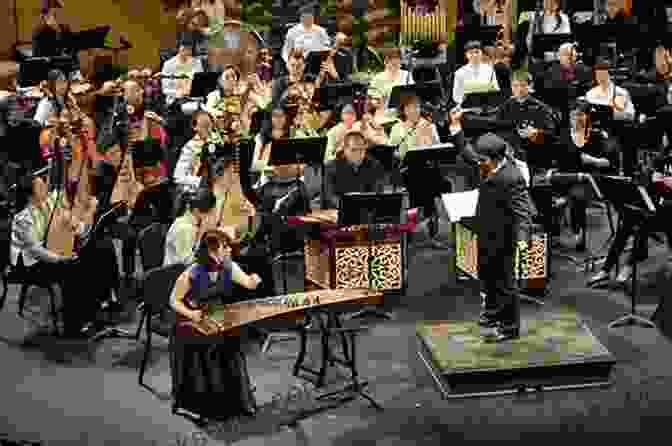
Despite their numerical minority, China's ethnic groups have made significant contributions to the nation's cultural heritage. Their unique perspectives, traditions, and artistic expressions have enriched the fabric of Chinese society.
- Music and Dance: Minority groups have contributed a wide range of musical styles and dance forms to Chinese culture, including Tibetan folk music, Uyghur muqam, and Mongolian throat singing.
- Art and Crafts: Minority artisans are renowned for their exquisite craftsmanship, producing textiles, ceramics, jewelry, and other artistic objects that are prized for their beauty and cultural significance.
- Cuisine: Minority cuisines have introduced a diverse array of flavors and ingredients to Chinese culinary traditions, such as Tibetan momos, Uyghur nang, and Mongolian milk tea.
- Traditional Medicine: Minority cultures have preserved ancient medical traditions, such as Tibetan medicine and Uyghur traditional healing, which offer unique approaches to health and well-being.
- Cultural Festivals: Minority groups celebrate their unique cultural identities through festivals, such as the Tibetan New Year, the Uyghur Meshrep, and the Yi Torch Festival, which provide opportunities to showcase their traditions and promote cultural exchange.
Challenges Faced by Minority Groups
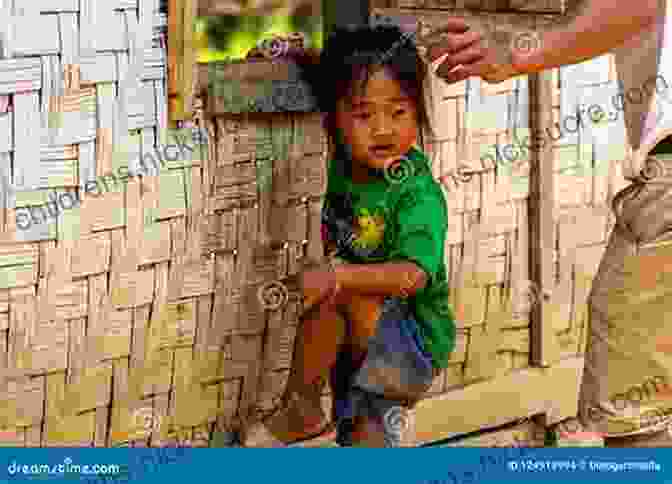
Despite their contributions, minority groups in China have faced challenges related to economic development, social integration, and cultural preservation.
- Economic Disparities: Minority regions often lag behind more developed areas in terms of economic growth and infrastructure, leading to limited opportunities for education, employment, and healthcare.
- Cultural Assimilation: The influence of Han culture and the dominant political system can lead to the erosion of minority languages, traditions, and lifestyles.
- Social Discrimination: Some minority groups have reported experiences of discrimination and marginalization in employment, education, and other areas of public life.
Efforts to Preserve Cultural Heritage

Recognizing the importance of preserving cultural diversity, the Chinese government has implemented policies and programs aimed at protecting and promoting the cultural heritage of minority groups.
- Cultural Autonomy: The Chinese constitution guarantees cultural autonomy for minority groups, including the right to preserve their languages, customs, and religious practices.
- Education and Cultural Exchange: The government supports minority education, including bilingual programs and the establishment of cultural exchange programs between minority regions and other parts of China.
- Cultural Heritage Protection: The government has designated numerous sites and artifacts of cultural significance as protected heritage, providing funding for their preservation and restoration.
China's diverse majority is a testament to the rich cultural tapestry of the nation. The minority groups of China have made significant contributions to the country's history, culture, and heritage. While challenges remain, efforts to promote cultural autonomy, preserve traditions, and foster social integration are essential for ensuring the continued vitality and vibrancy of China's ethnic diversity.
By embracing the diversity of their population, China can continue to draw strength from the unique perspectives and traditions of its
5 out of 5
| Language | : | English |
| File size | : | 4286 KB |
| Text-to-Speech | : | Enabled |
| Screen Reader | : | Supported |
| Enhanced typesetting | : | Enabled |
| Print length | : | 203 pages |
Do you want to contribute by writing guest posts on this blog?
Please contact us and send us a resume of previous articles that you have written.
 Fiction
Fiction Non Fiction
Non Fiction Romance
Romance Mystery
Mystery Thriller
Thriller SciFi
SciFi Fantasy
Fantasy Horror
Horror Biography
Biography Selfhelp
Selfhelp Business
Business History
History Classics
Classics Poetry
Poetry Childrens
Childrens Young Adult
Young Adult Educational
Educational Cooking
Cooking Travel
Travel Lifestyle
Lifestyle Spirituality
Spirituality Health
Health Fitness
Fitness Technology
Technology Science
Science Arts
Arts Crafts
Crafts DIY
DIY Gardening
Gardening Petcare
Petcare Helen Czerski
Helen Czerski Dominique Pearson
Dominique Pearson T Chris Riley Tillman
T Chris Riley Tillman Behrouz Moemeni
Behrouz Moemeni Tina Payne Bryson
Tina Payne Bryson Judy Goodspeed
Judy Goodspeed Rachel Levin
Rachel Levin Nicholas Wade
Nicholas Wade Sharon N Covington
Sharon N Covington David E Maranz
David E Maranz Mark Bertin Md
Mark Bertin Md Paul Twitchell
Paul Twitchell Peter Liljedahl
Peter Liljedahl Martina Sprague
Martina Sprague Jim Grimsley
Jim Grimsley Peter Galison
Peter Galison Cindy Hudson
Cindy Hudson Susanne Elizabeth Freidberg
Susanne Elizabeth Freidberg Paul Fowler
Paul Fowler Intisar Khanani
Intisar Khanani Sadie Word
Sadie Word Tommy Shea
Tommy Shea J W Lynne
J W Lynne Iain Mccalman
Iain Mccalman One Exam Prep
One Exam Prep Persia Woolley
Persia Woolley Tennille Chaffin
Tennille Chaffin Bruce Feiler
Bruce Feiler Ed Robinson
Ed Robinson Little Mat
Little Mat Carla Hall
Carla Hall Ann Cook
Ann Cook Oswald Rivera
Oswald Rivera Brian Burke
Brian Burke Hunter S Fulghum
Hunter S Fulghum Gina Atencio Maclean Psyd
Gina Atencio Maclean Psyd Pete Earley
Pete Earley Edward O Thorp
Edward O Thorp Ann Imig
Ann Imig Rebecca M Warner
Rebecca M Warner Stanley Vestal
Stanley Vestal Thomas Lewis
Thomas Lewis Deborah J Bennett
Deborah J Bennett Karen Jettmar
Karen Jettmar Joe Shuber
Joe Shuber Myron Mixon
Myron Mixon James Freeman
James Freeman Jim Burris
Jim Burris L A Cotton
L A Cotton Art Clepper
Art Clepper Katherine Nichols
Katherine Nichols Eugene Hecht
Eugene Hecht Ron Rhodes
Ron Rhodes Thomas Thompson
Thomas Thompson Tony Butt
Tony Butt Marc Weissbluth M D
Marc Weissbluth M D Miyamoto Musashi
Miyamoto Musashi Kathy Fray
Kathy Fray Katherine Keith
Katherine Keith Scott Douglas
Scott Douglas Steve Economides
Steve Economides Danielle Centoni
Danielle Centoni Anita Cortez
Anita Cortez Mayur Movalia
Mayur Movalia Kate Bowler
Kate Bowler Graham Allcott
Graham Allcott Marck Vaisman
Marck Vaisman Darren Kirby
Darren Kirby Lori Morrison
Lori Morrison Anita Knight Kuhnley
Anita Knight Kuhnley Michael Deshotels
Michael Deshotels John Brockman
John Brockman Jean Paul Pequegnot
Jean Paul Pequegnot Kim Loraine
Kim Loraine Phoenix Nature
Phoenix Nature Rebecca Rolland
Rebecca Rolland Julie Knutson
Julie Knutson Dale Grdnic
Dale Grdnic Melissa Watson
Melissa Watson Emiko Jean
Emiko Jean Dr Gareth Moore
Dr Gareth Moore D J Taylor
D J Taylor Elissa Altman
Elissa Altman Gail Carriger
Gail Carriger Barry Correia
Barry Correia Philip P Massaro
Philip P Massaro Willie Mosconi
Willie Mosconi Peter Wacht
Peter Wacht Daniel Paolicchi
Daniel Paolicchi Yuri Kitayama
Yuri Kitayama Vivienne Crow
Vivienne Crow Bob Stegner
Bob Stegner Jazmine Mccoy
Jazmine Mccoy Brendan Leonard
Brendan Leonard Peter Julius Sloan
Peter Julius Sloan Paul Eng
Paul Eng Sandra Cisneros
Sandra Cisneros John Monyjok Maluth
John Monyjok Maluth Mari Silva
Mari Silva Buster Holmes
Buster Holmes Donovan Buck
Donovan Buck Nims Purja
Nims Purja Tom Mole
Tom Mole Gary Robert Muschla
Gary Robert Muschla Beth Berry
Beth Berry Frank Falcinelli
Frank Falcinelli Ann Leary
Ann Leary Dick Pobst
Dick Pobst Jon G Hughes
Jon G Hughes Beth A Grosshans
Beth A Grosshans Tyler Feder
Tyler Feder Michelle Hercules
Michelle Hercules Nouaoui Khedidja
Nouaoui Khedidja Henny Bogan
Henny Bogan Mike Lowery
Mike Lowery Emma Anne Bellamy
Emma Anne Bellamy Tri Thong Dang
Tri Thong Dang Sharan B Merriam
Sharan B Merriam Natale Barca
Natale Barca Benjamin T Mast
Benjamin T Mast Lindsey Fitzharris
Lindsey Fitzharris Mia Collins Parker
Mia Collins Parker Simon Boulter
Simon Boulter Sean Parker Dennison
Sean Parker Dennison Guy Deutscher
Guy Deutscher Brent E Turvey
Brent E Turvey Ronald M Holmes
Ronald M Holmes Rachel Hartman
Rachel Hartman Rosanne S Mchenry
Rosanne S Mchenry Robert H Shumway
Robert H Shumway Ann Marie Brown
Ann Marie Brown Edward B Fiske
Edward B Fiske Joshua Wright
Joshua Wright Dr Tracy Sanders
Dr Tracy Sanders Kevin Robbins
Kevin Robbins Michael Easter
Michael Easter Stu Ingraham
Stu Ingraham Sherri Mitchell
Sherri Mitchell Jena Pincott
Jena Pincott Kumiko Makihara
Kumiko Makihara Brian Hayden
Brian Hayden John Krige
John Krige L R Shorter
L R Shorter J M Adovasio
J M Adovasio Carl J Pratt
Carl J Pratt Iri Cermak
Iri Cermak Christina Mcghee
Christina Mcghee 2nd Edition Kindle Edition
2nd Edition Kindle Edition Rae Brewer
Rae Brewer Karl Deisseroth
Karl Deisseroth Sadie Lake
Sadie Lake Becky Choi
Becky Choi Sharon Cameron
Sharon Cameron Sean Vigue
Sean Vigue Robert Jervis
Robert Jervis Dale Peterson
Dale Peterson Wendy Moore
Wendy Moore Emile Durkheim
Emile Durkheim Max M Houck
Max M Houck Stephane Cazeault
Stephane Cazeault Jody Vasquez
Jody Vasquez Eric Alpenfels
Eric Alpenfels Chris Dombrowski
Chris Dombrowski Jade Mckenzie Stone
Jade Mckenzie Stone J Budziszewski
J Budziszewski Ray Walker
Ray Walker Julian Guthrie
Julian Guthrie Frederick Lewis Allen
Frederick Lewis Allen Janet Patkowa
Janet Patkowa Terry Hill
Terry Hill Bob Greene
Bob Greene Nicholaos Kehagias
Nicholaos Kehagias Paul Volponi
Paul Volponi Nancy Ellen Abrams
Nancy Ellen Abrams Dorothy Roberts
Dorothy Roberts Emily R King
Emily R King Julius Evola
Julius Evola Chris Townsend
Chris Townsend Richard J Davidson
Richard J Davidson Emily Teeter
Emily Teeter Gordon Forbes
Gordon Forbes Deborah Hunter Kells
Deborah Hunter Kells Kaylind Olson
Kaylind Olson John Frohnmayer
John Frohnmayer Dickie Bird
Dickie Bird Tyler Ninja Blevins
Tyler Ninja Blevins Doug Cook
Doug Cook Emma Hansen
Emma Hansen Caleb Lee
Caleb Lee Reed Mangels
Reed Mangels Ann Chamberlin
Ann Chamberlin Hugh Harris
Hugh Harris Ray Bergman
Ray Bergman William S Frisbee Jr
William S Frisbee Jr Discover Press
Discover Press Remmi Smith
Remmi Smith Elisa S Amore
Elisa S Amore Judith A Muschla
Judith A Muschla Shel Banks
Shel Banks Chuck Robbins
Chuck Robbins Ben Magid
Ben Magid Gregory J Stewart
Gregory J Stewart Peter Croker
Peter Croker Mary O Hora
Mary O Hora Elizabeth G Harper
Elizabeth G Harper Eric B Taylor
Eric B Taylor Kathy Borkoski
Kathy Borkoski Richard Weaver
Richard Weaver Baby Professor
Baby Professor Anthony Castrovince
Anthony Castrovince Brian Platzer
Brian Platzer Sarah J Tracy
Sarah J Tracy Scott Keyes
Scott Keyes Joshua Glenn
Joshua Glenn Erling Kagge
Erling Kagge Sharlene Healy
Sharlene Healy Ann Bingham
Ann Bingham Victoria Clarke
Victoria Clarke Kevin Callan
Kevin Callan Anil Ananthaswamy
Anil Ananthaswamy John Romer
John Romer Tracy Salcedo
Tracy Salcedo Peter Feinman
Peter Feinman Johnny Molloy
Johnny Molloy Deena Kastor
Deena Kastor Lindsey Hutchinson
Lindsey Hutchinson Tim Kimmel
Tim Kimmel Charlene Beswick
Charlene Beswick Ryan Tandler
Ryan Tandler John J Kaag
John J Kaag Paul Hough
Paul Hough Presh Talwalkar
Presh Talwalkar Angelo Tropea
Angelo Tropea Laura M Ahearn
Laura M Ahearn J M Thompson
J M Thompson Felicity Aston
Felicity Aston Flor M Salvador
Flor M Salvador Bill Bishop
Bill Bishop Len Kravitz
Len Kravitz John Feinstein
John Feinstein Michael Kranish
Michael Kranish Beth Cavenaugh
Beth Cavenaugh Ann Cameron
Ann Cameron Nikki Goth Itoi
Nikki Goth Itoi Anita Biase
Anita Biase Daniel Harman
Daniel Harman Michael Edelson
Michael Edelson Elena Delle Donne
Elena Delle Donne Julie Watson
Julie Watson Molly Harper
Molly Harper Clinton Bailey
Clinton Bailey David M Gitlitz
David M Gitlitz Jennifer Dugan
Jennifer Dugan Eric Wargo
Eric Wargo Daxton Wilde
Daxton Wilde Gavin Atkin
Gavin Atkin Jeremy Griffith
Jeremy Griffith Kristin Knight Pace
Kristin Knight Pace Bruce Gregor Hodge
Bruce Gregor Hodge J L Heilbron
J L Heilbron Jimmy Song
Jimmy Song Rick Clark
Rick Clark Miles Cameron
Miles Cameron Gary Sutherland
Gary Sutherland Larry Greene
Larry Greene Roasted Rat
Roasted Rat William J Ray
William J Ray Scott Haugen
Scott Haugen Marc Roche
Marc Roche Jeff A Johnson
Jeff A Johnson Helen Yang
Helen Yang Robin Barrett
Robin Barrett William Lee
William Lee Sarah Albee
Sarah Albee Michael S A Graziano
Michael S A Graziano Richard Karban
Richard Karban Neil Smith
Neil Smith Frank Mastini
Frank Mastini Michael Yessis
Michael Yessis Benedict Go
Benedict Go Sherman Dickinson
Sherman Dickinson Namit Arora
Namit Arora Frank X Sutman
Frank X Sutman Eric Hanauer
Eric Hanauer Douglas Turkington
Douglas Turkington Grant Mcomie
Grant Mcomie David J Lieberman
David J Lieberman Dick Crouser
Dick Crouser Jenna Tinsley
Jenna Tinsley Norman Hall
Norman Hall Jeff Deters
Jeff Deters David Deming
David Deming Tim Leffel
Tim Leffel George Hincapie
George Hincapie Robin Esrock
Robin Esrock Waysun Liao
Waysun Liao Clayton Geoffreys
Clayton Geoffreys Jennifer Harvey
Jennifer Harvey Comni S Art Publishing
Comni S Art Publishing Ann Israel
Ann Israel Bookrags Com
Bookrags Com R H Charles
R H Charles Robert A Sadowski
Robert A Sadowski Isla Gordon
Isla Gordon Simon Winchester
Simon Winchester Karen Lynch
Karen Lynch Sean Deveney
Sean Deveney Hippocrates
Hippocrates Shane Frederick
Shane Frederick Joanna Nylund
Joanna Nylund Sue C Funnell
Sue C Funnell Cynthia Miller Idriss
Cynthia Miller Idriss Wade Bourne
Wade Bourne Kalman Samuels
Kalman Samuels Dean Karnazes
Dean Karnazes Scholastic
Scholastic Al Goldis
Al Goldis Michael Harris
Michael Harris Ariel Dalfen
Ariel Dalfen Darlene D Pedersen
Darlene D Pedersen Bill Fowler
Bill Fowler Fred Heath
Fred Heath Jennie Germann Molz
Jennie Germann Molz Felice Benuzzi
Felice Benuzzi Jan Witkowski
Jan Witkowski Sandra Steingraber
Sandra Steingraber Tahereh Mafi
Tahereh Mafi Martin L Kutscher
Martin L Kutscher Je Earl
Je Earl Patricia Ann Lynch
Patricia Ann Lynch Mark Wilson
Mark Wilson Robert G Bugge
Robert G Bugge Anja Beran
Anja Beran Elizabeth Wayland Barber
Elizabeth Wayland Barber Ava Richardson
Ava Richardson Mark Chang
Mark Chang Warren Berger
Warren Berger Megan Hallett
Megan Hallett Tabatha Yeatts
Tabatha Yeatts Jenny Carr
Jenny Carr Richard Rorty
Richard Rorty Cgp Books
Cgp Books Laurie R King
Laurie R King Brianna Madia
Brianna Madia Nick Schade
Nick Schade Lin Lougheed
Lin Lougheed Oliver Horovitz
Oliver Horovitz J M Gregson
J M Gregson Magnus D Jango
Magnus D Jango Julie Gianelloni Connor
Julie Gianelloni Connor Weston Ochse
Weston Ochse Sara Wolf
Sara Wolf Judy Cannato
Judy Cannato Peter Lee
Peter Lee Bryson Payne
Bryson Payne William H Parker
William H Parker Joshua Straub
Joshua Straub Jean Molesky Poz
Jean Molesky Poz Kenneth Wilgus Phd
Kenneth Wilgus Phd Marissa Zwetow Lmft
Marissa Zwetow Lmft Jada Fisher
Jada Fisher Shannon Philpott Sanders
Shannon Philpott Sanders James Campbell
James Campbell Imre Lakatos
Imre Lakatos Colin Rees
Colin Rees Susan Zimmermann
Susan Zimmermann Sara Dykman
Sara Dykman Larry Mueller
Larry Mueller Govert Schilling
Govert Schilling Justin Mcelroy
Justin Mcelroy Angie Stanton
Angie Stanton Scott Cunningham
Scott Cunningham Kristen S Kurland
Kristen S Kurland Stan Lee
Stan Lee Sankofa Ra
Sankofa Ra Stewart Pearce
Stewart Pearce Angie Thomas
Angie Thomas Rob Kelley
Rob Kelley Terry Tempest Williams
Terry Tempest Williams Janet Renner
Janet Renner Alana Ash
Alana Ash Joy Bauer
Joy Bauer M K Hume
M K Hume Chad Wesley Smith
Chad Wesley Smith Jessica Redland
Jessica Redland David Rakel
David Rakel Eliot Cowan
Eliot Cowan Aditya Chatterjee
Aditya Chatterjee Jack El Hai
Jack El Hai Shirley Maclaine
Shirley Maclaine Max Kuhn
Max Kuhn Tom Dokken
Tom Dokken Ann Douglas
Ann Douglas Enrique Desmond Arias
Enrique Desmond Arias Laurence Gonzales
Laurence Gonzales Anjeanette Carter
Anjeanette Carter Don Larsen
Don Larsen Cathy Glass
Cathy Glass Rc Blakes Jr
Rc Blakes Jr Steven Dillon
Steven Dillon Vera Snow
Vera Snow F C Yee
F C Yee Angie Papple Johnston
Angie Papple Johnston Lisa Hoehn
Lisa Hoehn Rico Austin
Rico Austin David Poyer
David Poyer David Robert Grimes
David Robert Grimes Kamran Nazeer
Kamran Nazeer Ray Dozier
Ray Dozier Johnegreek
Johnegreek John Novosel
John Novosel Deborah Reber
Deborah Reber Jack O Connor
Jack O Connor Ryan Boudreaux
Ryan Boudreaux Josh Kaufman
Josh Kaufman Christina Tosch
Christina Tosch Illustrated Edition Kindle Edition
Illustrated Edition Kindle Edition Alex Bonham
Alex Bonham Nick Clausen
Nick Clausen Shonda Schilling
Shonda Schilling Steph Davis
Steph Davis Richard Paul Evans
Richard Paul Evans Sherrie Eldridge
Sherrie Eldridge Steph Jagger
Steph Jagger Henry A Giroux
Henry A Giroux Julie Cwikla Phd
Julie Cwikla Phd Ann Mariah Cook
Ann Mariah Cook Ann Bausum
Ann Bausum Imogen Barnacle
Imogen Barnacle Joan Didion
Joan Didion Phil G Tang
Phil G Tang Jessica Hall
Jessica Hall James Nickells
James Nickells Robert Edelman
Robert Edelman Jane Goodall
Jane Goodall Lisa Charlebois
Lisa Charlebois Bruce Ackerberg
Bruce Ackerberg Stephen G Post
Stephen G Post Susie Albert Miller
Susie Albert Miller Poul Anderson
Poul Anderson David J Wallin
David J Wallin Marley Hall
Marley Hall Vicki Lansky
Vicki Lansky Lisa Gardner
Lisa Gardner Samuel G Puryear
Samuel G Puryear Ichigo Takano
Ichigo Takano Don Jose Ruiz
Don Jose Ruiz Tami Oldham Ashcraft
Tami Oldham Ashcraft Wendy Mogel
Wendy Mogel Antonia Malchik
Antonia Malchik Steven Cowie
Steven Cowie Evelyn Monahan
Evelyn Monahan Michele Caputo
Michele Caputo Sarah Pink
Sarah Pink Dr Mike Dilkes
Dr Mike Dilkes David Roche
David Roche Russ Mitchell
Russ Mitchell Val Waldeck
Val Waldeck Wendy Lyons Sunshine
Wendy Lyons Sunshine Shannon Greenland
Shannon Greenland Laurie Varga
Laurie Varga Duncan Van Dusen
Duncan Van Dusen Tim Guest
Tim Guest Elliott Mendelson
Elliott Mendelson Paul Stewart
Paul Stewart Terry Leiden
Terry Leiden Brook Waters
Brook Waters Jason Rosenhouse
Jason Rosenhouse Kit Deslauriers
Kit Deslauriers Paul Vachon
Paul Vachon Chris Matakas
Chris Matakas Tabatha Chansard Phd
Tabatha Chansard Phd Jerry C Whitaker
Jerry C Whitaker John Heart
John Heart Elwyn Hayes
Elwyn Hayes Jason Aaron
Jason Aaron Frances Gies
Frances Gies Jeff Driscoll
Jeff Driscoll Tanya Holland
Tanya Holland Damo Mitchell
Damo Mitchell Will Murray
Will Murray Tracy Wolff
Tracy Wolff Joe Fox
Joe Fox Stephanie Garber
Stephanie Garber Marke Bieschke
Marke Bieschke Jean Rose
Jean Rose Erin Davis
Erin Davis Joshua Slocum
Joshua Slocum Lara Maiklem
Lara Maiklem Michael Harner
Michael Harner Christof Koch
Christof Koch Mary Helen Bowers
Mary Helen Bowers Mark Mayfield
Mark Mayfield Dr Richard L Travis
Dr Richard L Travis Brian Smith
Brian Smith Douglas Axe
Douglas Axe James A Fain
James A Fain Sara Zaske
Sara Zaske Quinn Loftis
Quinn Loftis Robison Wells
Robison Wells Ania G
Ania G Shalane Flanagan
Shalane Flanagan Dan Hicks
Dan Hicks
Light bulbAdvertise smarter! Our strategic ad space ensures maximum exposure. Reserve your spot today!

 Julio Ramón RibeyroJourney Into the Healing Wisdom of Plants: Unveiling Nature's Medicinal...
Julio Ramón RibeyroJourney Into the Healing Wisdom of Plants: Unveiling Nature's Medicinal...
 Aaron BrooksDelving into the Intricate World of Single Variable Calculus: A Comprehensive...
Aaron BrooksDelving into the Intricate World of Single Variable Calculus: A Comprehensive... Camden MitchellFollow ·19.3k
Camden MitchellFollow ·19.3k Joseph ConradFollow ·10k
Joseph ConradFollow ·10k Terence NelsonFollow ·17.4k
Terence NelsonFollow ·17.4k Corey GreenFollow ·2.4k
Corey GreenFollow ·2.4k Neil GaimanFollow ·18.9k
Neil GaimanFollow ·18.9k Scott ParkerFollow ·6.4k
Scott ParkerFollow ·6.4k Tom ClancyFollow ·16.6k
Tom ClancyFollow ·16.6k Tyrone PowellFollow ·4.3k
Tyrone PowellFollow ·4.3k

 Ernest J. Gaines
Ernest J. GainesMy Golf Blog Revolution: Open Stance
Are you ready to revolutionize your golf...

 Gene Powell
Gene PowellThe Unparalleled Genius of Calculus Volume Ichigo Takano:...
: The Birth of a...

 Edgar Hayes
Edgar HayesChild of the Northern Spring: A Journey of Discovery and...
In the heart of...

 Anthony Wells
Anthony WellsHybrid Aria: A Harmonious Blend of Modern Comfort and...
In the heart of a bustling...
5 out of 5
| Language | : | English |
| File size | : | 4286 KB |
| Text-to-Speech | : | Enabled |
| Screen Reader | : | Supported |
| Enhanced typesetting | : | Enabled |
| Print length | : | 203 pages |


